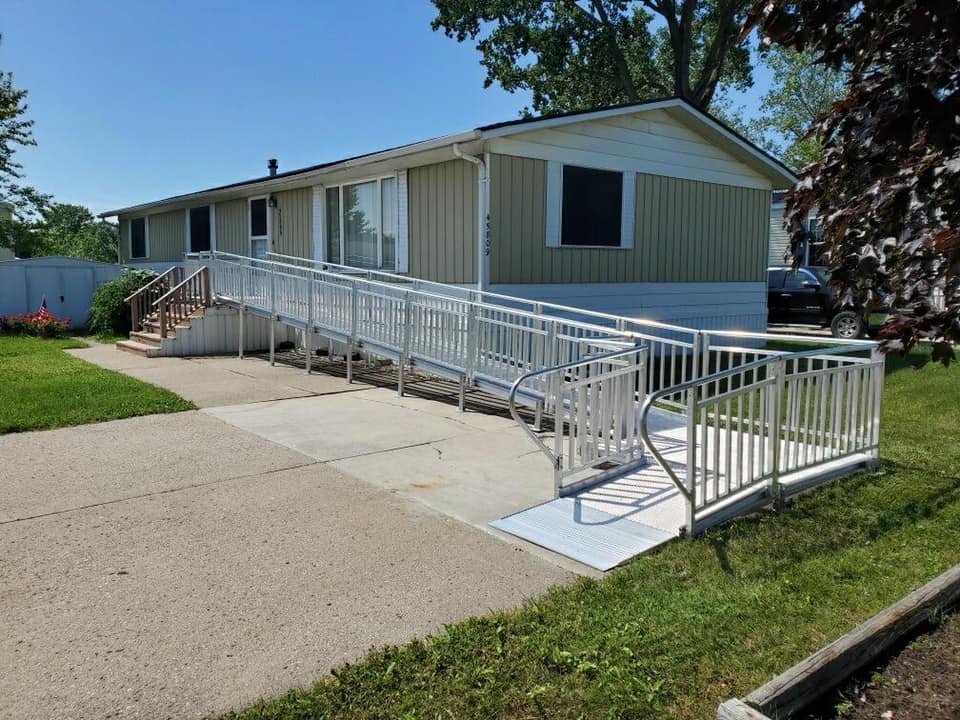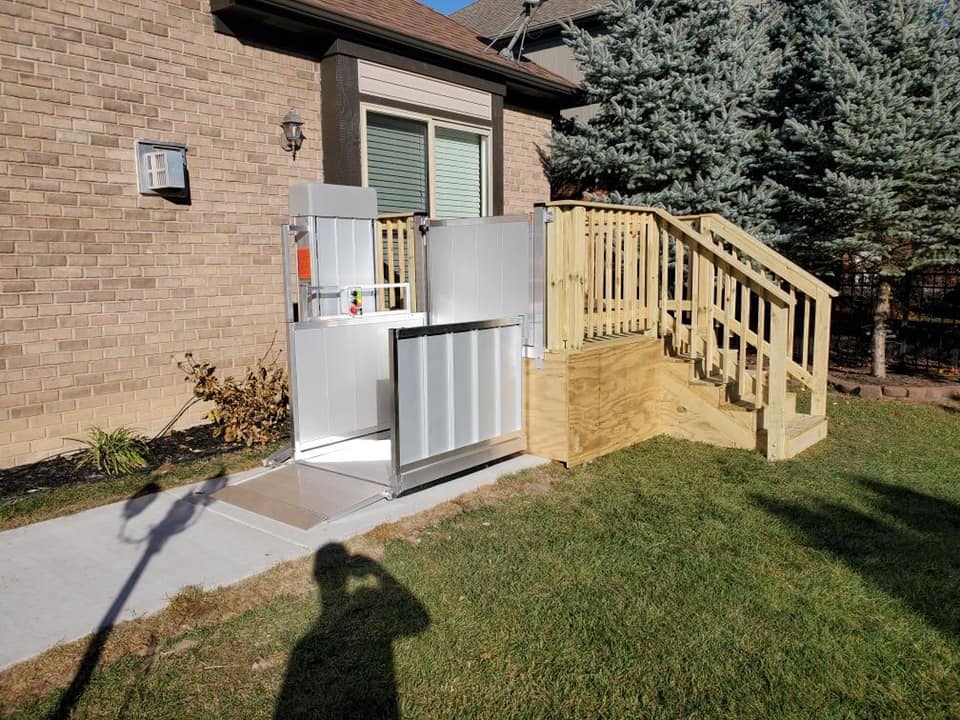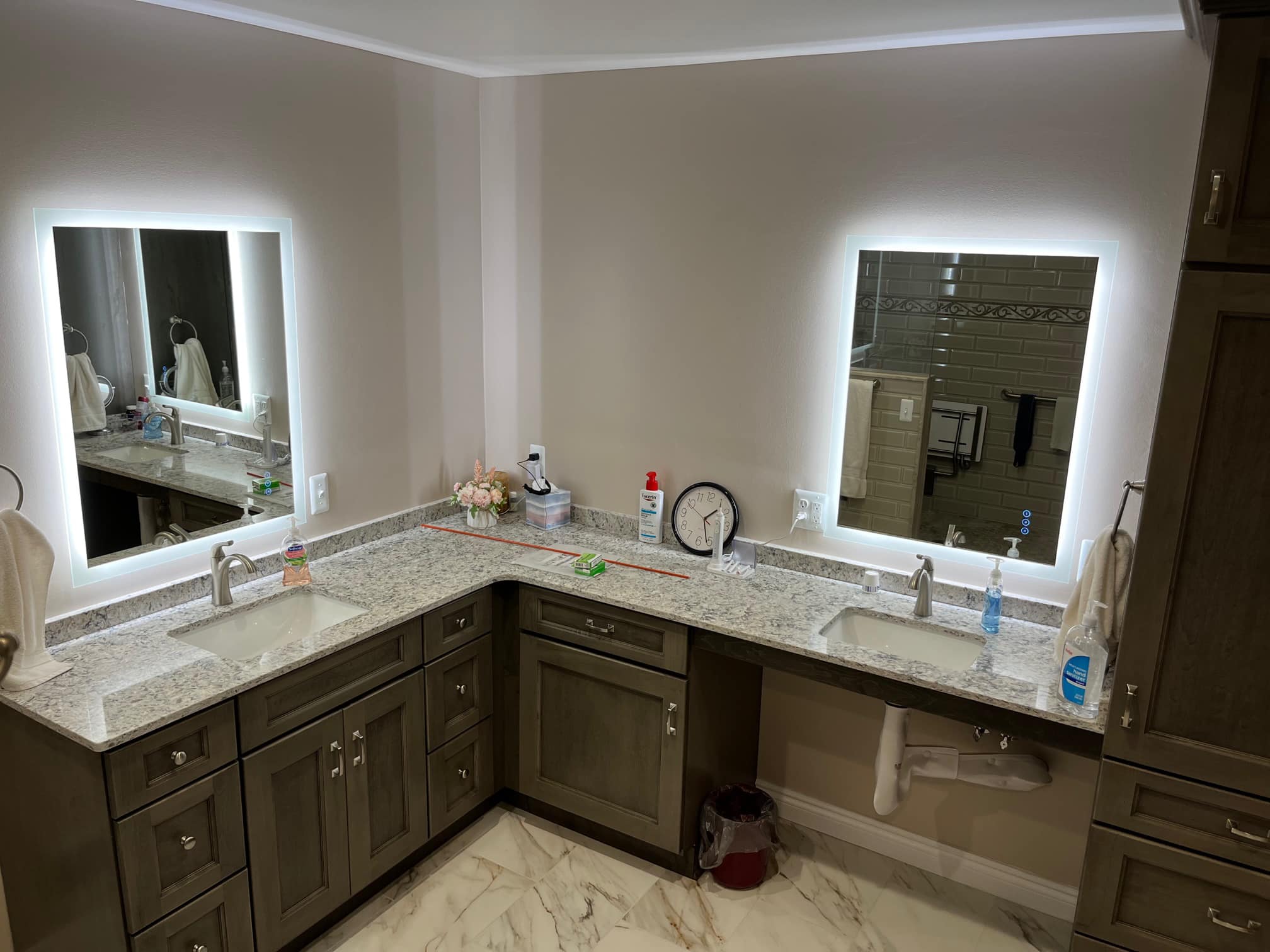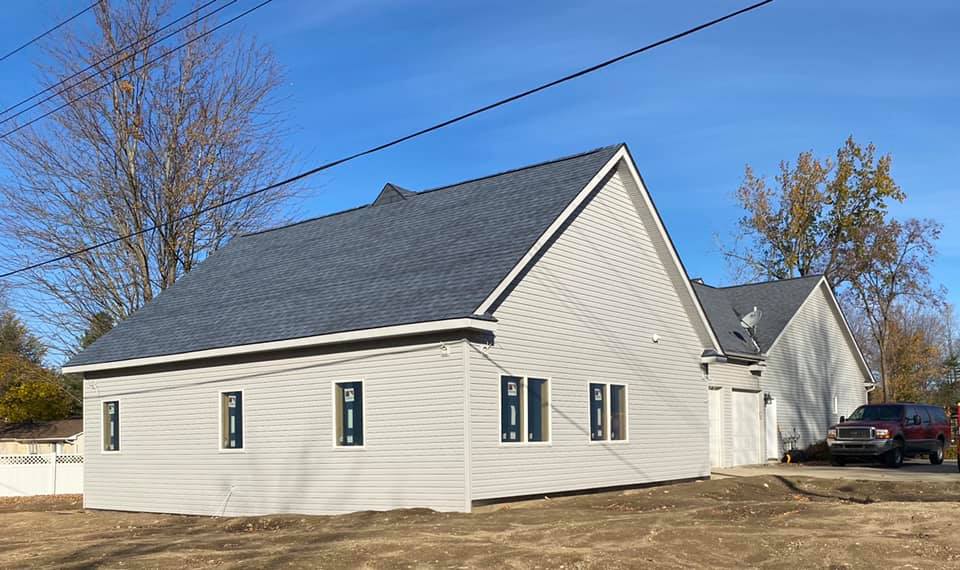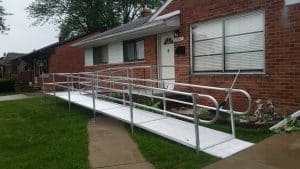 Barrier Free Plus Inc specializes in Wheelchair Ramps in Macomb County, MI. Please call (586) 598-2600 for a free Macomb County wheelchair ramp consultation today!
Barrier Free Plus Inc specializes in Wheelchair Ramps in Macomb County, MI. Please call (586) 598-2600 for a free Macomb County wheelchair ramp consultation today!
Wheelchair Ramps: Plans Designs & Information
Synopsis: Information and plans for designing wheelchair ramps including fold up portable and permanent access ramps for buildings
Definition: Wheelchair Ramp
An inclined plane installed in addition to or instead of stairs. Ramps permit wheelchair users, as well as people pushing strollers, carts, or other wheeled objects, to more easily access a building. Wheelchair ramps (or other ways for wheelchair users to access a building, such as a wheelchair lift) are required in new construction for public accommodations in the United States by the Americans with Disabilities Act. A wheelchair ramp can be permanent, semi-permanent or portable. Permanent ramps are designed to be bolted or otherwise attached in place. Semi-permanent ramps rest on top of the ground or concrete pad and are commonly used for the short term.
Main Document
Wheelchair ramps come in all shapes, sizes and types including permanent, semi-permanent, and portable ramp versions.
A wheelchair ramp is an inclined plane that can be used instead of stairs by wheelchair users as well as people pushing strollers or carts.
The Americans with Disabilities Act of 1990 (ADA) requires that a building or structure be accessible to wheelchair users and therefore a wheelchair ramp is needed. The wheelchair ramp gives a wheelchair user more accessibility where a vertical distance must be traversed.
Sem-permanent ramps – Rest on top of the ground or padding and are commonly used for short-term solutions.
Permanent ramps – Long-term solutions for disability act compliance and are usually bolted or cemented in place. These are best suited for new buildings or halls.
Portable ramps – Made of lightweight materials and can fold for ease of transport. It is important to find a variety that has a skid resistance surface. They are available in various metals and aluminum blends that are easy to maintain and clean.
There are quite a variety of portable vehicle wheelchair ramps available. Some are just ramps while others have handrails. Deluxe versions have handrails on both sides. The old style of track wheelchair ramps is still available. These have one ramp per set of wheels for the wheel chair and are most commonly used with vehicle access.
Vehicle Ramps – Vans equipped with wheelchair ramps are commonly seen at senior centers and schools where they are used to transport people with disabilities to and from public events. Many dealers sell vans with these ramps already attached – in fact it may be easier to purchase a new van rather than modify your old van to accommodate a wheelchair ramp.
Track Wheelchair Ramps – Designed to line up with the wheels of the wheelchair some of which use a telescoping design that extends to be used on steps, vans or curbs. For public transportation the construction of low floor trams and buses is being encouraged by the federal government.
Suitcase portable wheelchair ramps – Standard, single-folding units that fold in half and are carried like a suitcase with handles.
In America for loading unoccupied wheelchairs the ADA recommends a 3:12 slope.
This means for every three inches of vertical rise you are required to have a least one foot of ramp.
For business use the ADA recommends a 1:12 slope which means that every one inch of vertical rise requires one for the ramp. For example 24 inches of rise demands a 24-foot-ramp minimum.
The UK has its own set of guidelines which are more complicated because they integrate the metric and English terms of measurement.
Your state or provincial government is a good place to start if you’re looking for more information on how to make your business more accessible. Often your local government is able to provide tips on which features are the most effective and on how to install them.
Product appraisals and trials involving wheelchair users have highlighted the fact that no single ramp design met all the needs of the users, though wheelchair ramps were available in a diverse range of designs and configurations.
Facts: Access Ramp
Some common problems associated with permanent ramps include inclines which are too steep or uneven, improperly supported slopes and landings, lack of railings and side barriers or ramps which attain some height. Problems associated portable ramps include too short a length making the ramp too steep, unevenly placed ramps which can cause instability, improperly anchoring which can cause the portable ramp to slip off it’s upper surface whether it’s a van floor, porch or any other elevated platform.
Construction or placement of a ramp should take into account a manual wheelchair user’s upper body strength to push up a steeper incline, the stress on the motor of a scooter or power wheelchair of such an incline, and the tipping potential posed by descending a steeper ramp.
There must be a level landing at the top of the ramp and where the ramp meets the ground. The landing can be an existing surface such as a porch or sidewalk or it can be constructed as part of the ramp. Landings should be at least the same width as the ramp and 60 inches long in order to accommodate the entire wheelchair. If the landing is in front of a doorway, it should also provide enough space for you to open the door.
Statistics: US Wheelchair & Assistive Device
In a 2012 Current Populations Report published by the US Census Bureau, data collected between May and August of 2010 was used to determine how many people in the United States used wheelchairs and other assistive devices:
•Approximately 3.6 million people reported using a wheelchair.
•Approximately 2 million people aged 65+ reported using a wheelchair.
•Approximately 11.6 million people reported using a cane, crutches, or a walker.
•Approximately 7 million people aged 65+ reported using a cane, crutches, or a walker.
•That equates to more than 15 million people who reported using an assistive device, and 9 million of those people were aged 65+.
source: disabled-world.com
Barrier Free Plus Inc specializes in the design and installation of Wheelchair Ramps in Macomb County, MI. Please call (586) 598-2600 for a free Macomb County wheelchair ramp consultation.

